"We are measuring the distance of a ball that we kick in the x and z direction." - Spencer Brown, class of 2021
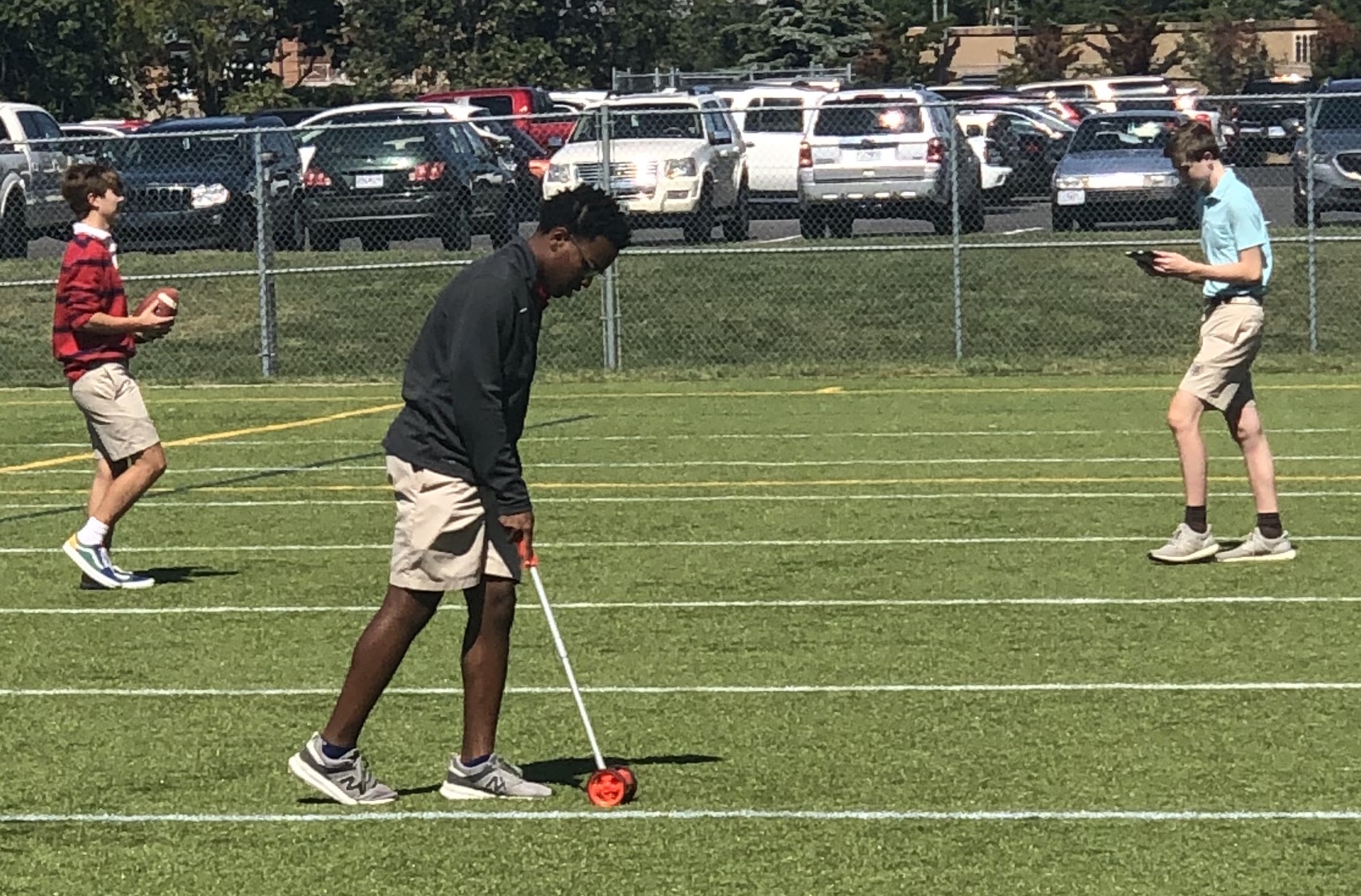
Physics student measuring the horizontal trajectory of a kicked ball with a trundle wheel.
Should learning be theoretical or practical? This question took center stage as early as the School of Athens during the time of the Greeks. Mr. Stephen Arico, physics instructor, works to ensure the student learning experience incorporates both.
While studying particle motion, students are tasked to go out on the soccer field and videotape their classmates kicking soccer balls footballs. After they capture these objects in motion, the students then use the school’s Vernier software to plot the data.
Rockhurst High School junior, Spencer Brown, explains the goal of the physics lab.
Through curve-fitting technology (Pro tip: selecting ‘quadratic’ curve fitting instead of ‘linear’ works way better), the students can identify the nature of falling bodies on our God-given planet Earth.
The original kick used for the data for the worksheets in this blog.
The same video with points overlayed on top of the ball at various moments.
The students then each fill out a traditional projectile motion worksheet, but they must use their own data! In this way, each students experience the same learning exercise, but their results are personalized to the student specific data. The worksheets of Obi Oligbo can be seen below. Warning: his data is quite beautiful!
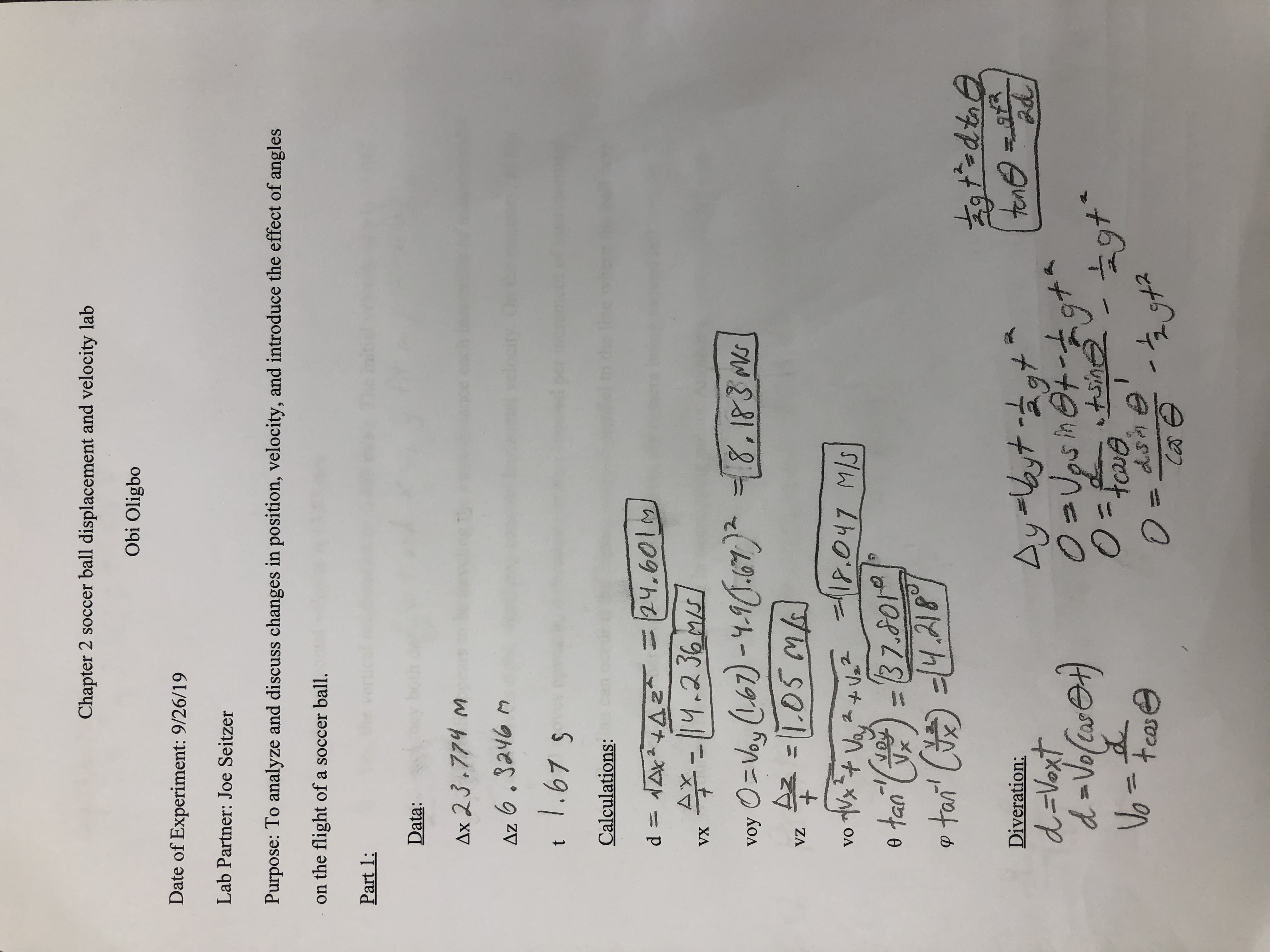
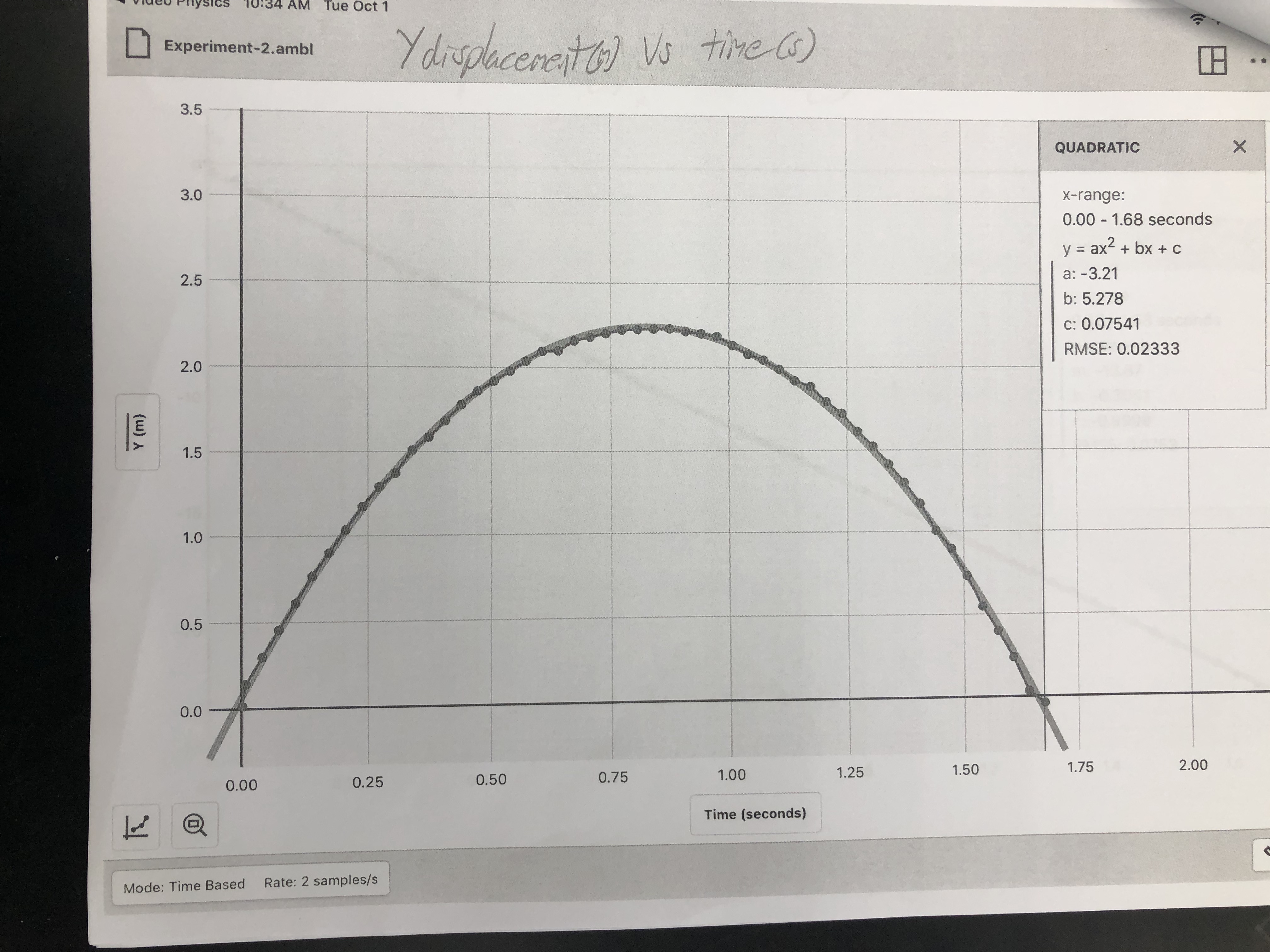
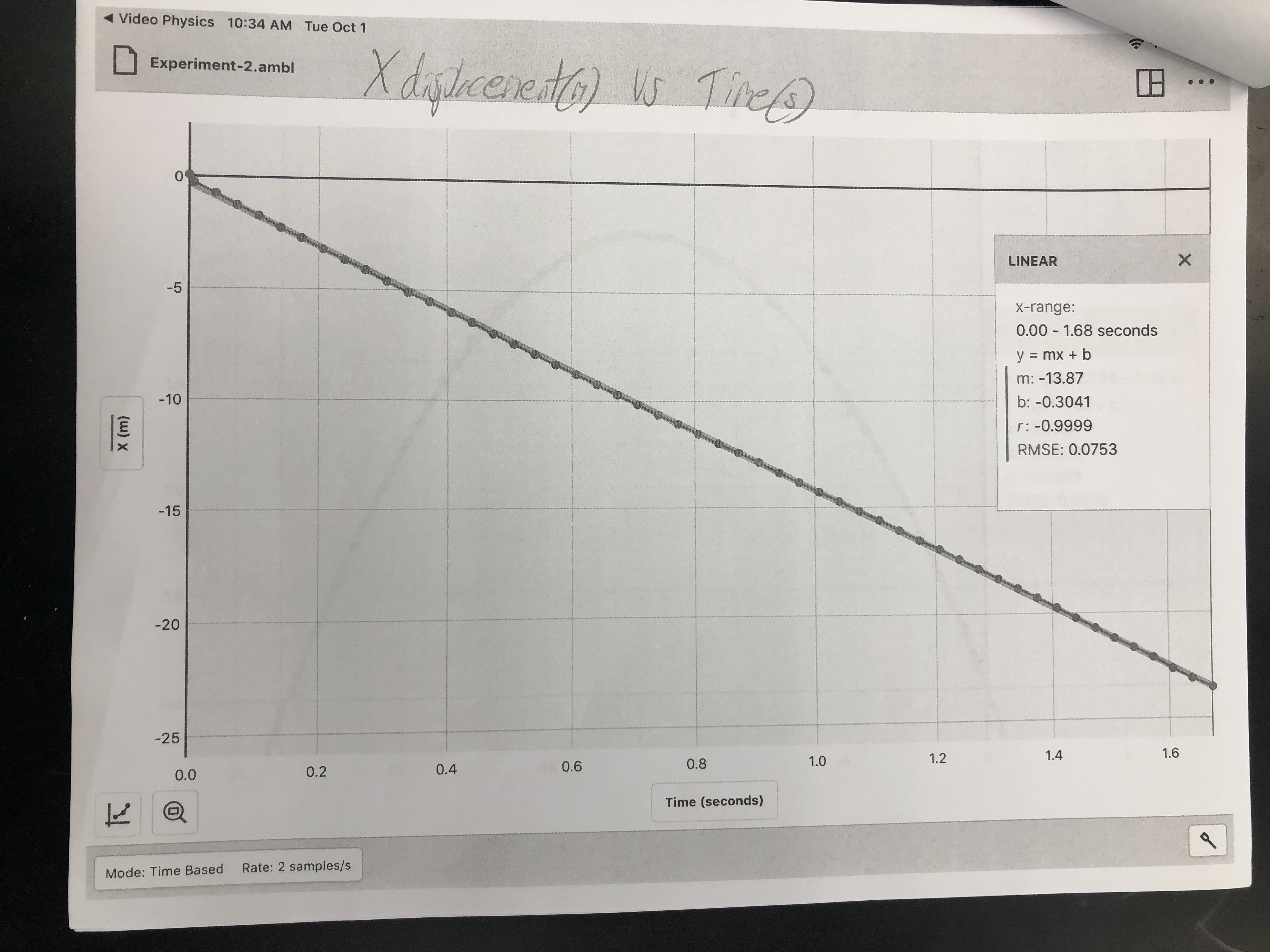
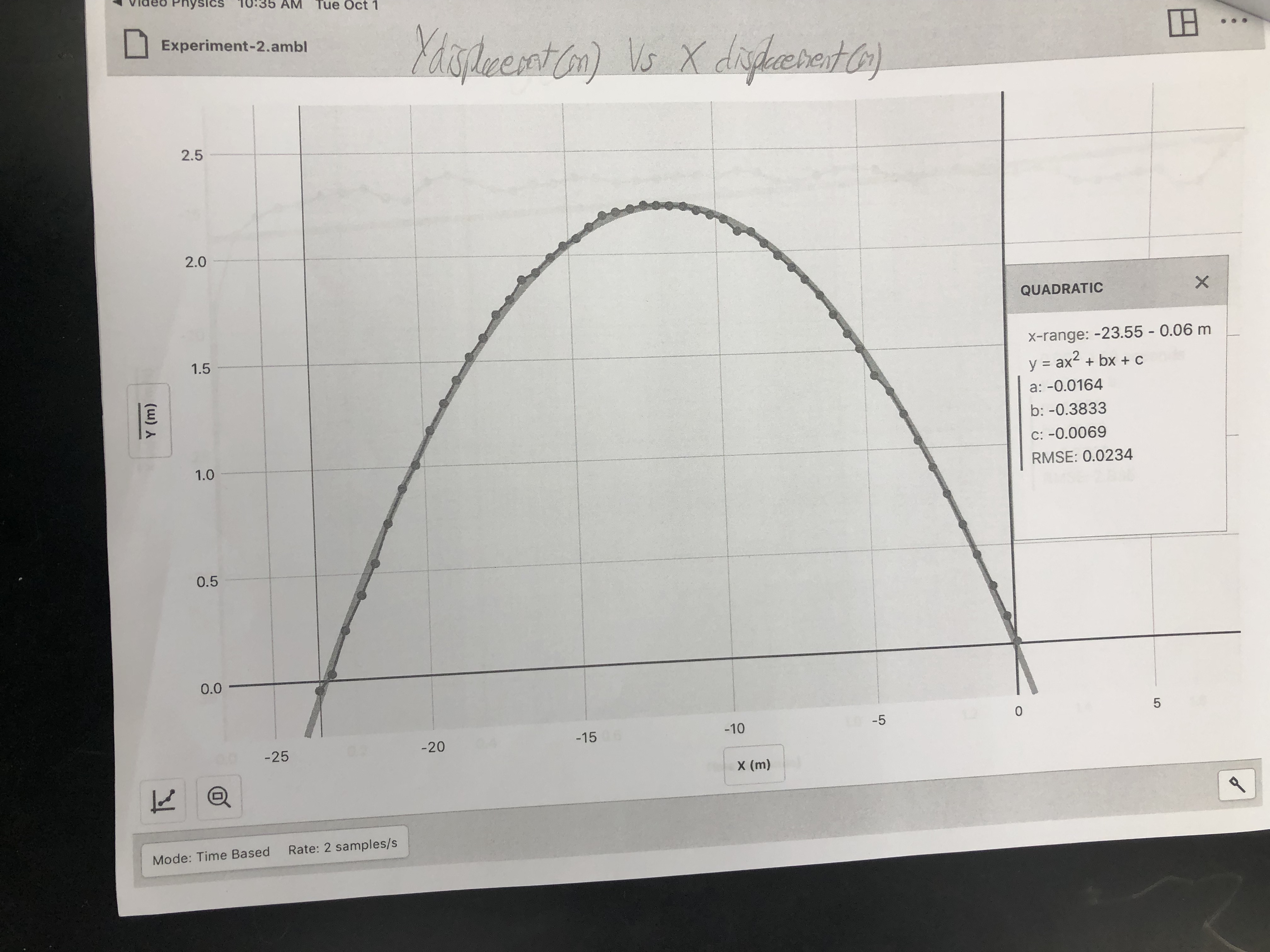
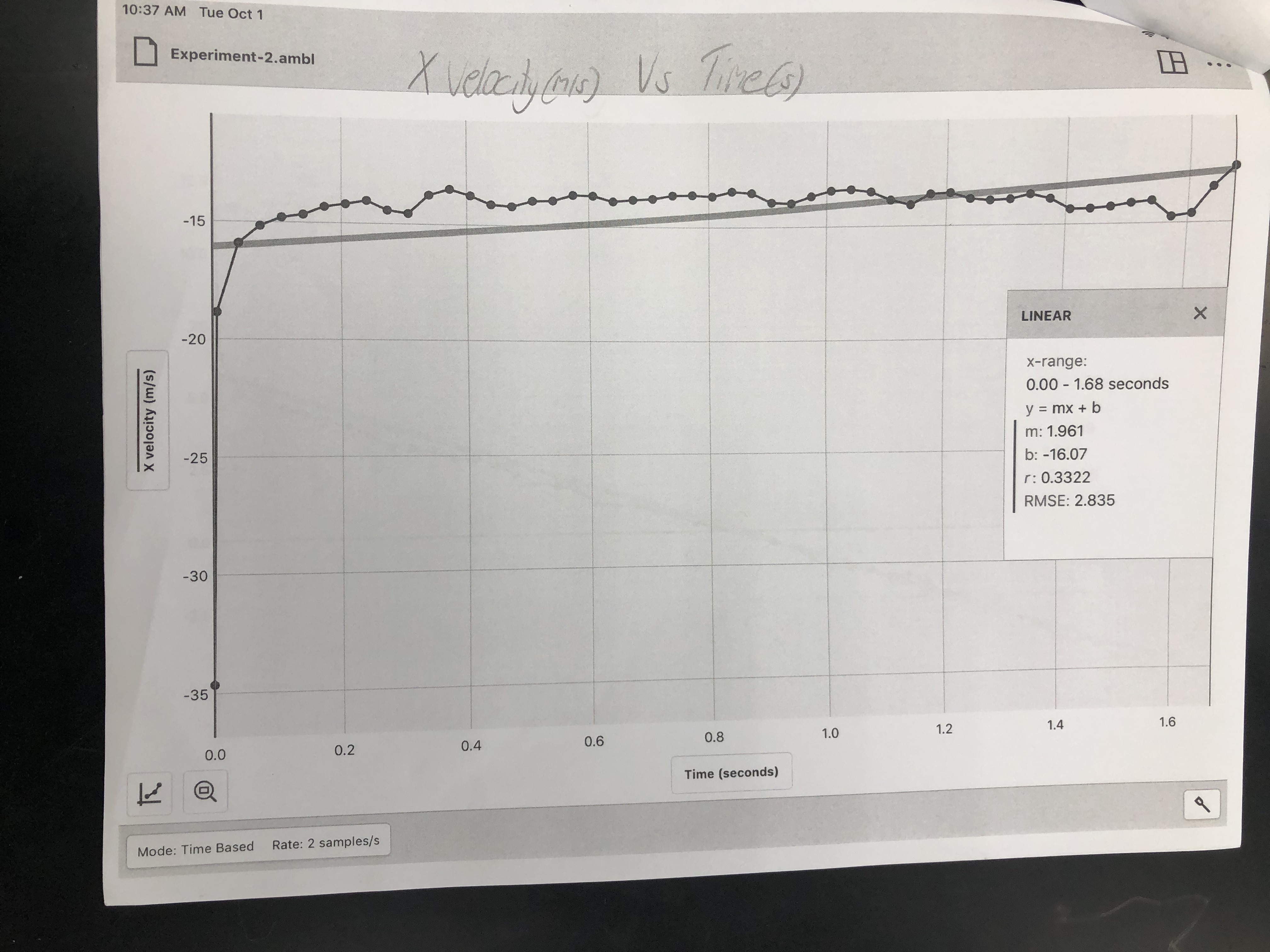
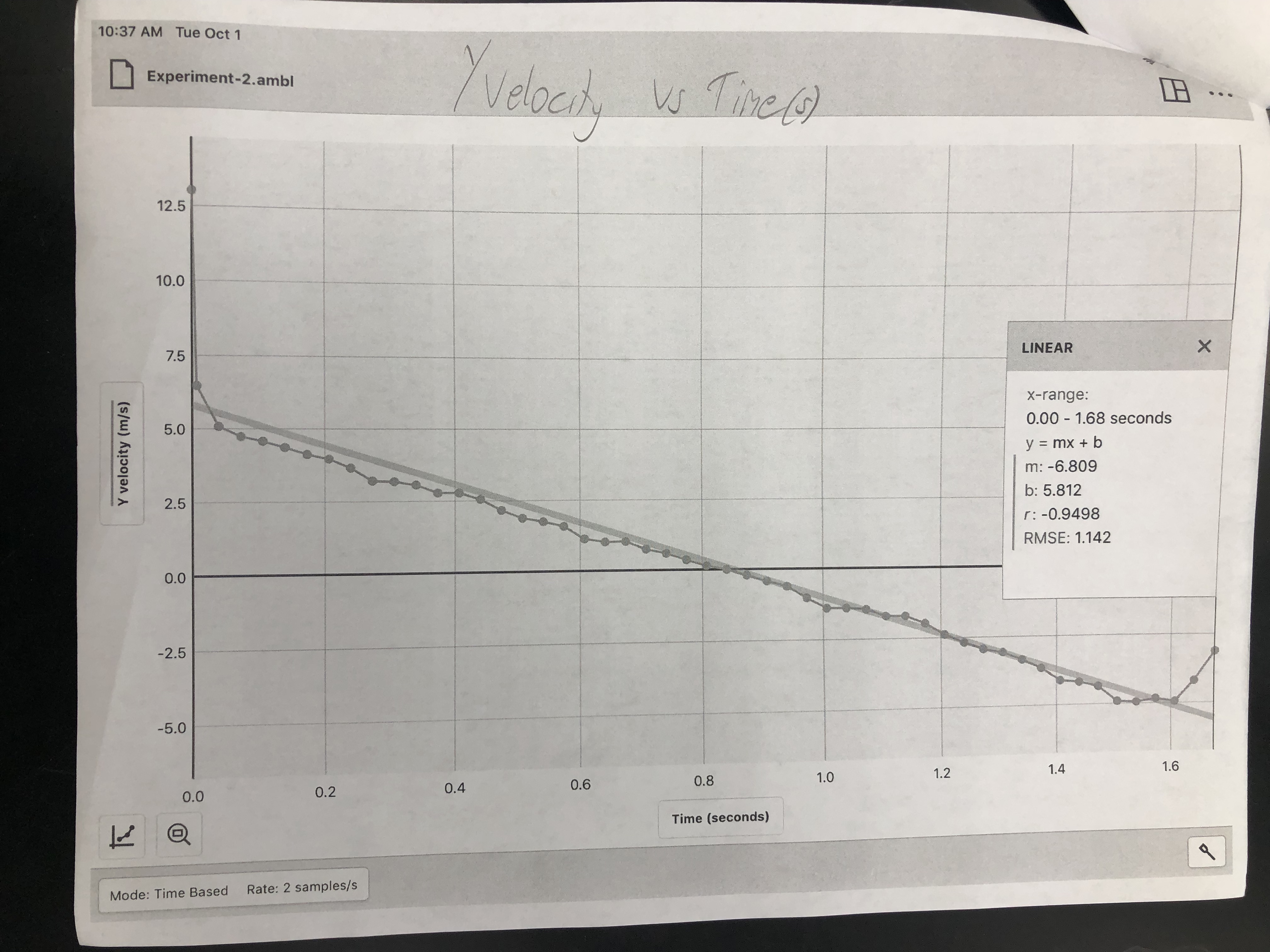
This activity exemplifies the sweet spot between the theoretical and the practical. The students experience a hands-on learning experience while still being held accountable for learning rigorous physics content.
Mr. Stephen Arico, master Physics teacher, explains how to use the Vernier software for their football lab.


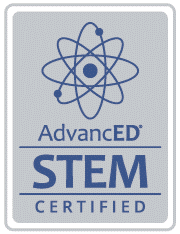
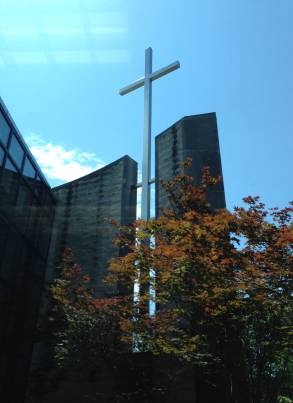
Comments